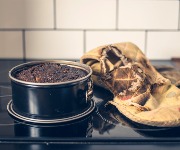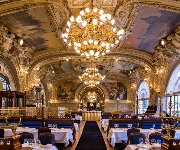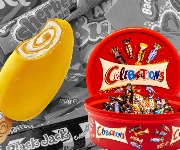Christmas Sparkle

We are all a little bit guilty of endlessly turning to Champagne to do the trick. And why wouldn't we be drawn to it? Its elegant, aromatic taste, mixed in with the tale of its serendipitous birth.
It’s ironic to think that up until a few years ago, most of us thought there were only two types of wine. If it wasn’t Red, it was White.
Of course, this was only because somewhere throughout its existence, the translucent Rose variety acquired a reputation for being the lower-end, poorer, younger sibling of our trusty and much-loved two mainstream versions.
How wrong we were. Rose wine, with a much-improved standing, now sees pages dedicated to its different offerings on wine lists all over the world. With our snobbery shot to pieces, the 'pink stuff' is no longer relegated to being the ‘one in the middle’ anymore.
But is there some embedded ignorance when it comes to the bubbly shelf? This Christmas and New Year, will we know what to serve in those all-important cork-popping moments?
We are all a little bit guilty of endlessly turning to Champagne to do the trick. And why wouldn’t we be drawn to it? Its elegant, aromatic taste, mixed in with the tale of its serendipitous birth – the myth goes that a 17th Century Benedictine monk, Dom Perignon, accidentally produced sparkling wine when he allowed his wine-brewing bottles to enter into secondary fermentation by neglecting them in the cellars of Abbey of Hautvillers - make it our, if not, the, ultimate aperitif.
We also all tend to mistakenly call anything that looks and tastes like Champagne, Champagne. What most of us do not know however, is that it can only really go by this name if made within the specific region confines (it sits to the East of Paris) where a particular series of exacting properties go into making it what it is. That said, the intricacies of the Methode Champenoise are laborious and it is just one of the reasons why classic French fizz can often carry a pretty hefty price tag. (Louis Roederer Cristal hits the shelves at £200 a bottle)
So what else is there? Italian Prosecco and Spanish Cava are among the most celebrated and enjoyed tipples away from the Champagne circle, but don’t be fooled into thinking these are cheaper alternatives, for they are merely substitutes.
Prosecco
This light-bodied sparkling wine, with what people call ‘peach-blossom’ scents and aromas, is labelled so after the eponymous Veneto grape from which it draws its unique and flavoursome taste. Produced through the Charmant method – where the secondary fermentation process takes place within large vat tanks – Prosecco has seen its popularity multiply tenfold over the last few decades. Originally said to be the perfect pudding wine, it has bewitched bubbly-lovers to the point that it now frequently replaces Champagne in those most celebratory of celebratory moments (New Year, Weddings). Sweet, lightly fizzed, it also won’t break the bank. My tip? Prosecco Valdobbiadene Brut Jeio from Bisol. Stocked at Sainsbury’s. £66 for 6.
Cava
If you're blessed with a discerning nose, you'll notice half way down a glass of this Catalan sparkling wine, the unforgettable notes of honey, sour apple and dried herbs. But to the majority of you, this Spanish drink is just simply the perfect emulation of Champagne. Not least because to create Cava, the product follows the exact same path as that of its French relative - secondary fermentation occurs in the bottle, and not in large buckets, like Prosecco. But Cava's key delight lays elsewhere - its price. Always low, always affordable, it is somewhat of a relief to families who need to buy in bulk this New Year. Don’t be ashamed about reaching for Cava – it is half the price, but rarely half as good. Stick to Waitrose Cava Brut (£5 a bottle) and you won’t go wrong.
‘Sekt’ in Germany, Italian Franciacorta and French ‘Cremant’ are also other tried and tested delicious sparkling wines. And it’s worth noting these lesser-known names down, for if you’re serving a room that isn’t filled with sommeliers and fussy palettes, it would be advisable to look for bottles which offer you the best deal – not the best tradition. After all, a few glasses down, and no one can ever really tell the difference. Cheers!
Also worth your attention:
Most Recent
Comments
Be the first to comment
Do you want to comment on this article? You need to be signed in for this feature








